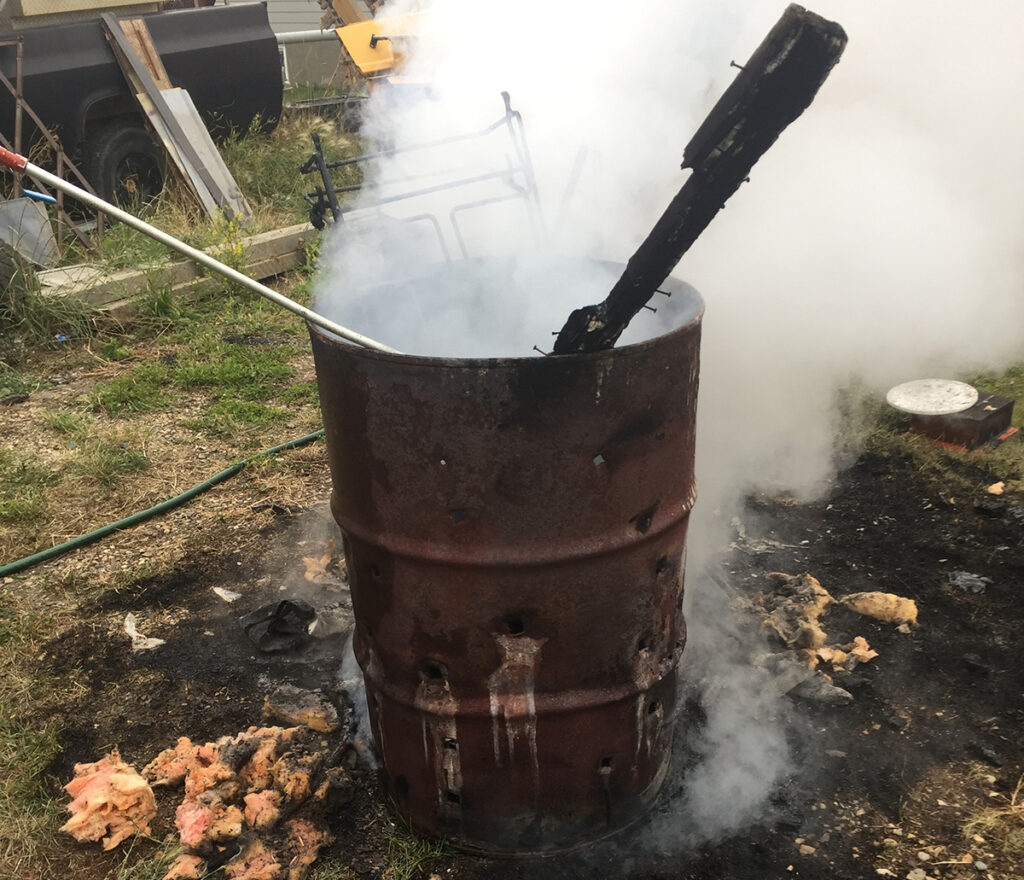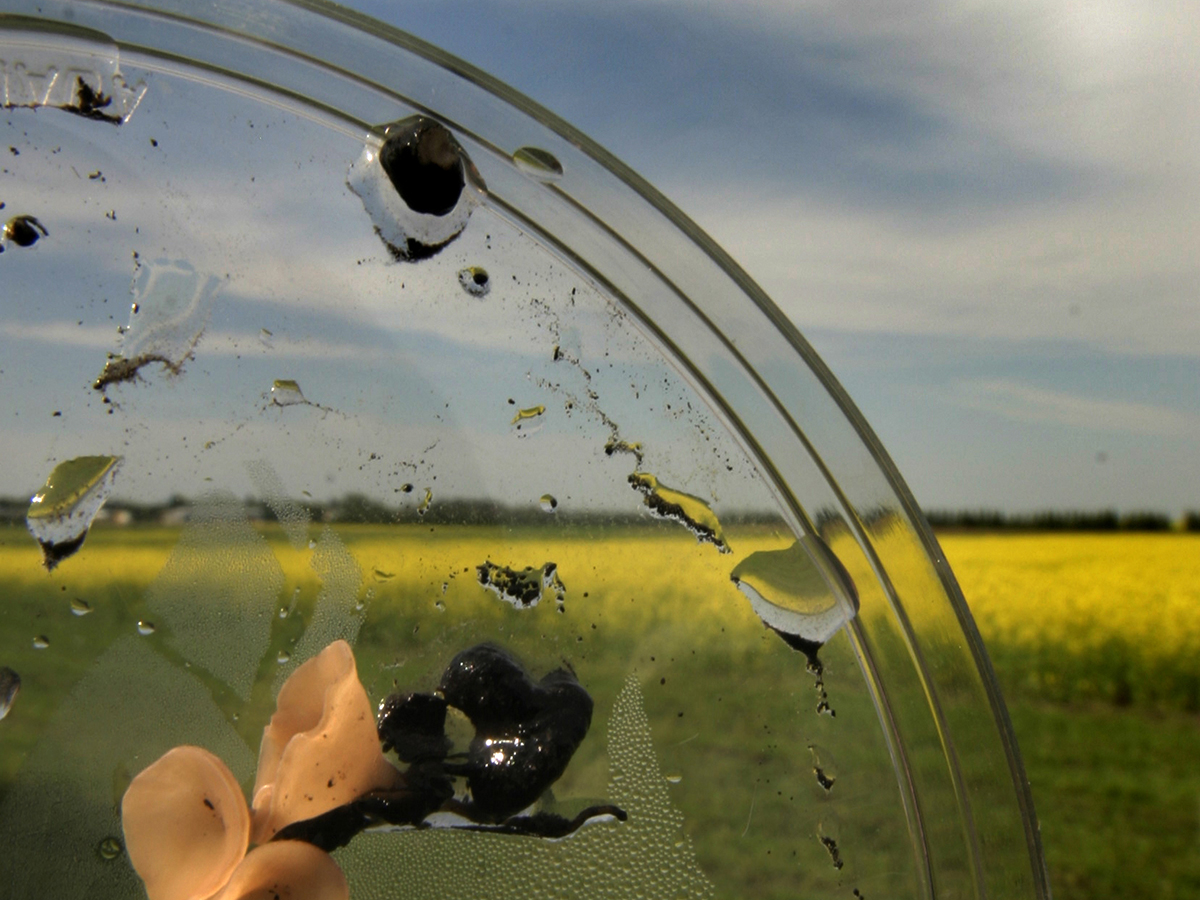Prevent farm fires this spring

Glacier FarmMedia – Fire season started early in Manitoba’s agricultural region this year.
Over the Easter weekend, fire crews were called out to one such grass fire near Portage la Prairie.
“A lot of farmers will do controlled burns in the spring time to burn ditches and sloughs. Sometimes they get out of control,” said Brad Bailey, fire chief for the City and Rural Municipality of Portage La Prairie.
Read Also


Sclerotinia-resistant canola varieties may be in the cards
A San Diego company is closer to commercializing a trait that could protect canola from sclerotinia.
“The fires we’ve seen this year have been pretty minor so far, and manageable.”
Rail traffic is another possible cause for grass fires due to sparks thrown by train wheels.
Earlier this month, the Manitoba Wildfire Service had imposed travel and fire restrictions on parts of both southeastern Manitoba and the Interlake due to forecasted winds, warm temperatures and a lack of humidity. Burn permits were pulled, although some essential agricultural burns might get an exemption, “with the approval of an officer and will include a site inspection with strict conditions,” according to an April 30 fire bulletin put out by the province.
Improper use of burn barrels can easily start fires, Prairie fire experts warn. People may contribute to the risk of fire by not using proper screens on the barrels or clearing the grass around the barrel itself.
It’s important to have a burn barrel with mesh on top for any burning you do, said Jeff Erwin, wildland urban interface specialist with Manitoba Agriculture.
“Always cover your burning barrel with the metal screen that’s six millimetres thick at least, and clear at least three metres of grass from around your burn barrel,” he said.
Added David LeBlanc, fire chief and director of protective services with Northern Sunrise County in Alberta: “The burn barrel could be sitting on dry grass and end up catching grass on fire.… We’ve had someone lose a shed here and there in the past from that.”
In an email, Janice Boden, manager of agricultural services for the Municipal District of Bonnyville in Alberta, noted burn barrels should not be used in high winds or in the heat of day. When burning, farmers should have access to water.
Bailey further suggested that farmers burn after a light rain, when possible.
“You have to have someone watching the burn barrel all the time. You can’t go away and go for lunch or a washroom break. You should have someone there watching it because it’s easy for something to blow away or get out of the barrels,” he said.
LeBlanc further noted the tendancy for burned-down burn piles to flare back up. People burning in spring often check the seemingly depleted pile and assume all is well. Then the wind kicks up, the burn pile dries out and rekindles.
“We had one person lose a large garage, a farm garage, to the burn pile that had rekindled and travelled to the dry grass. It then burned the structure down,” he said.
LeBlanc said ember showers can be picked up in the wind and create spot fires around a farm. Keeping piles of wood away from the house and eavestroughs free of debris helps reduce the risk.
Erwin said pruning trees is another good strategy, and mowing grass around the yard can help prevent fires. Grazing animals can also be used to keep the length of the grass down, he said.
Boden also suggested removing brush, weeds and tall grass from around structures, reducing the vectors for fire spread around buildings. Erwin similarly recommended cleaning out flower beds and shelterbelts.
Reducing flammable material on the property, such as dried out pallets, was also flagged.
Bailey suggested putting gravel rather than grass around structures, storing baled hay and feed away from important buildings and choosing non-combustible materials when building.
“Everyone really needs to pay attention to what they’re storing and where they are storing it,” said Bailey.
Hay that is not cured to the proper moisture point for baling could spontaneously combust, Erwin said.
About once a year, machinery will catch fire in a field, said LeBlanc. This can happen because the machine strikes a rock or because the machine is improperly maintained or greased.
“The bearings are heating up and igniting when you’re cutting, when you’re harvesting in the fall. There’s like this fine, fine dust that’s left and blowing around the air. It’s easily ignited, so we get some of those fires,” he said.
One best management practice is to refuel all equipment outdoors and turn off all machinery before refuelling.
Erwin said farmers should make sure their off road vehicles don’t get caked up with mud. Debris can build on exhausts when farmers travel through wet areas.
“There’s a lot of fires started every year just with the exhaust system that can get to 200 degrees,” he said.
Fire extinguishers should be kept in buildings around a farm, and all family members and employees should know how to use them.


Erwin said it is important to check power lines and poles and keep them clear of trees.
“The major cause of fires that we have in our area is electrical,” Bailey also said.
“Always try to make sure you get a qualified person doing your electrical work. The days of doing the wiring yourself and thinking you’ve got it right just isn’t acceptable any more. You need to make sure you get qualified people in and keep electrical boxes free of equipment so you can easily get to them.”
Storing chemicals properly can also prevent fires.
“If you’re dealing with different types of mixed fertilizers and chemicals, make sure it’s in a well-ventilated area. Some of these can be quite flammable,”said LeBlanc.
Spills should be cleaned up immediately.
LeBlanc recommended farmers identify all exits and evacuation routes on their farms and ensure all family members and employees are familiar with them. An emergency plan to house livestock in the event of an evacuation is another asset. Farmers should have a comprehensive identification list of all the animals on the farm, including health details and physical characteristics.
If relocation isn’t possible, Boden suggested cutting fences so animals are not trapped.
Most farmers store water on their farm, and they should make sure water is available if they are engaging in an activity that heightens the risk of fire.
Erwin further suggested that farmers with a hot tub or outdoor pool should make it accessible for firefighters.
Harrowing or tilling at the field edge also creates a valuable fire break.
“If there was ever a spot fire that jumped the road into the field, it would stay in the field and not go any further. It would hit that tilled up dirt and keep it out of the bush line,” said LeBlanc.
Farmers are also reminded that farm gates need to be at least 3.5 metres wide to accomodate emergency vehicles.
Bailey pointed to the Firesmart program guides from Alberta and British Columbia, which he said offer good guidelines for farmers who want to fireproof their farm. These guides are available on the internet and will work for farmers in any province.
Source: www.producer.com


